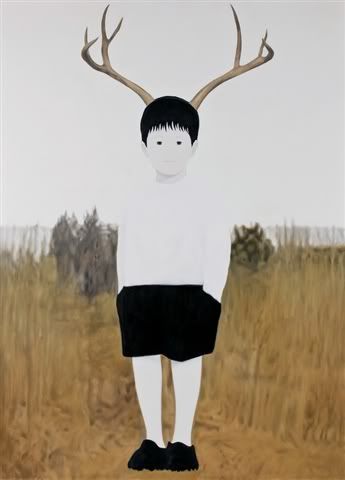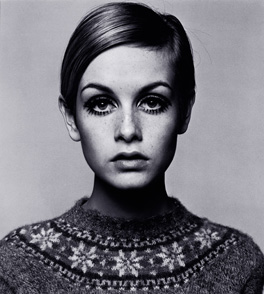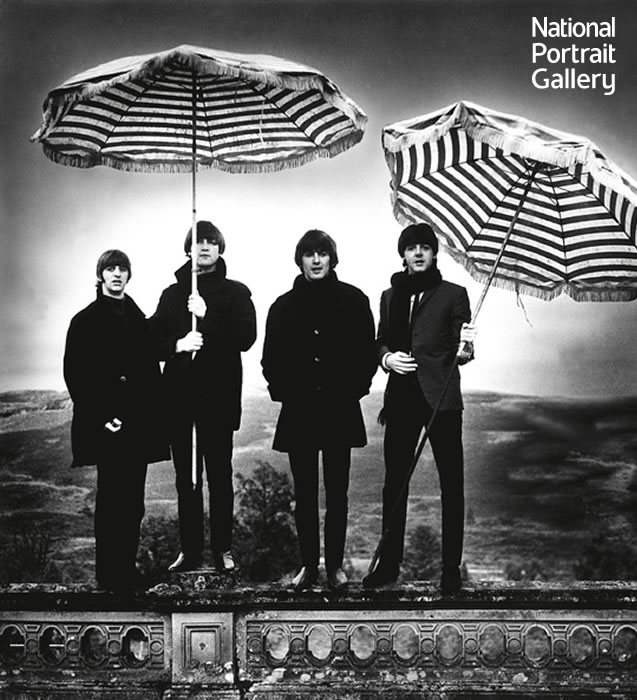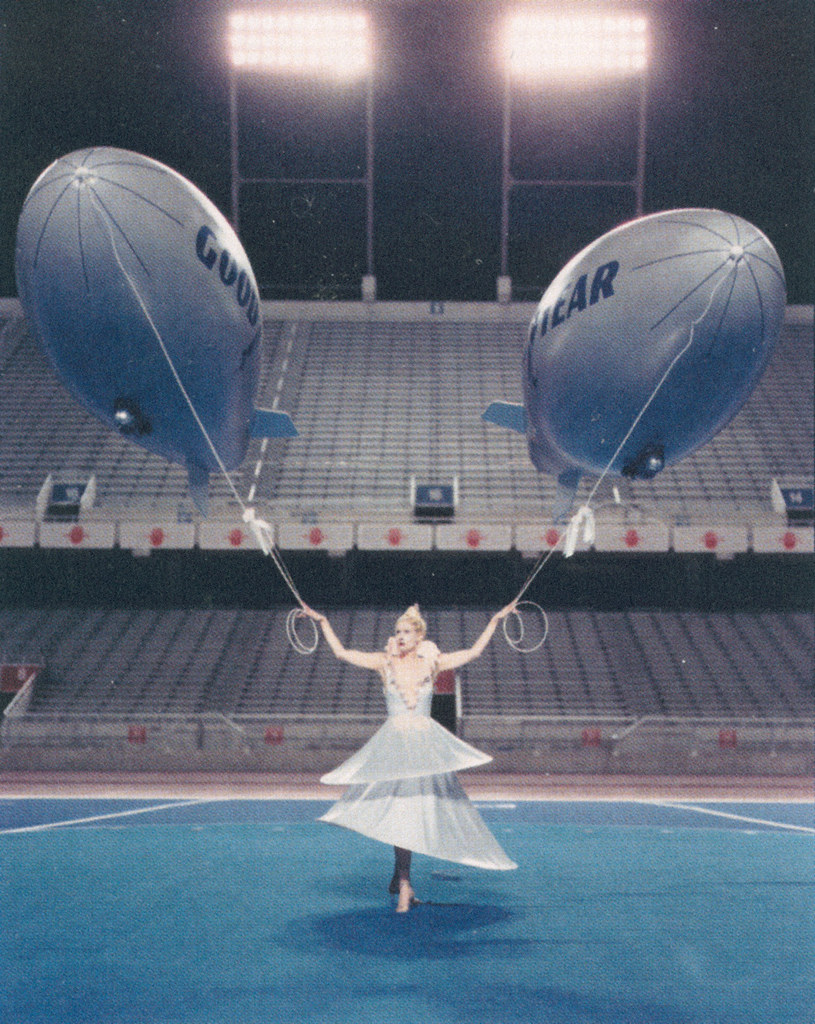
Mayuka Yamamoto
Deer Boy, 2006
Oil on Canvas
227cm x 162cm
It was another "Deer Boy" painting that first attracted my eyes while I was flipping through a recent auction catalogue in the art gallery I worked for previously. But when I was looking up the artist on the internet, this painting of a "deer boy" against an easily recognizable Japanese landscape suddenly brought me back to some remote place in my memory. It was then that I recalled a scene in A Pale View of Hills by Kazuo Ishiguro, my favourite Japanese novelist (the only Japanese who has ever won a Booker Prize). I was made to study this difficult and depressing novel for my A-Level English Literature exam, and it was only until much later that I could fully comprehend the powerful force of the narrative. And this painting of the quiet pale boy revokes again all these sentiments. The river banks covered by untrimmed reeds, the silent child, the unrecoverable loss of the post-war Japanese, the pale view of hills, the bleakness of it all.
MAYUKA YAMAMOTO was born in 1964 in Okayama. Her artwork has been exhibited worldwide and she currently lives and works in Gunma. She completed the Master Program of Musashino Art University in 1990, and in 1998, she was selected by the Japanese Government Overseas Study Program for Artists to study in London. Her early work focused on etching, but she also worked with oil. Her paintings remained ambiguous and fluid in style. In 2002, at the time of the birth of her child, she seemed to have had a strange experience - as if her pregnancy had reminded her of her own animal nature. "I could concentrate only on my child, and when I think about this now it seems so odd to me. I found myself instinctively involved in this nest-making-process." From that point, her art-work became more focused and she is currently working on a series of oil paintings. The boy painted by Mayuka Yamamoto looks sad and uneasy, and the viewer can find something mysterious. Her paintings are holding a fascinating allure.




